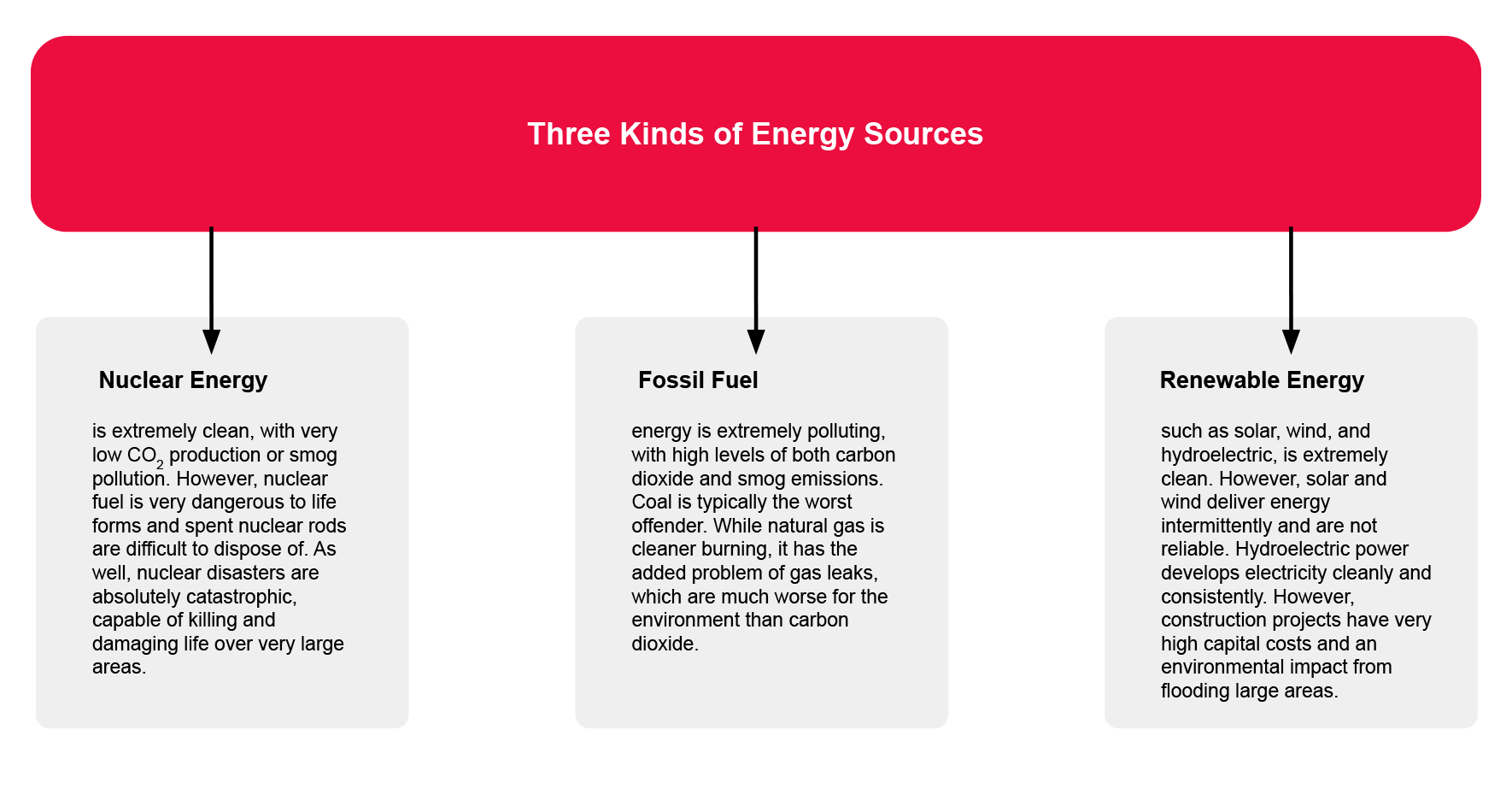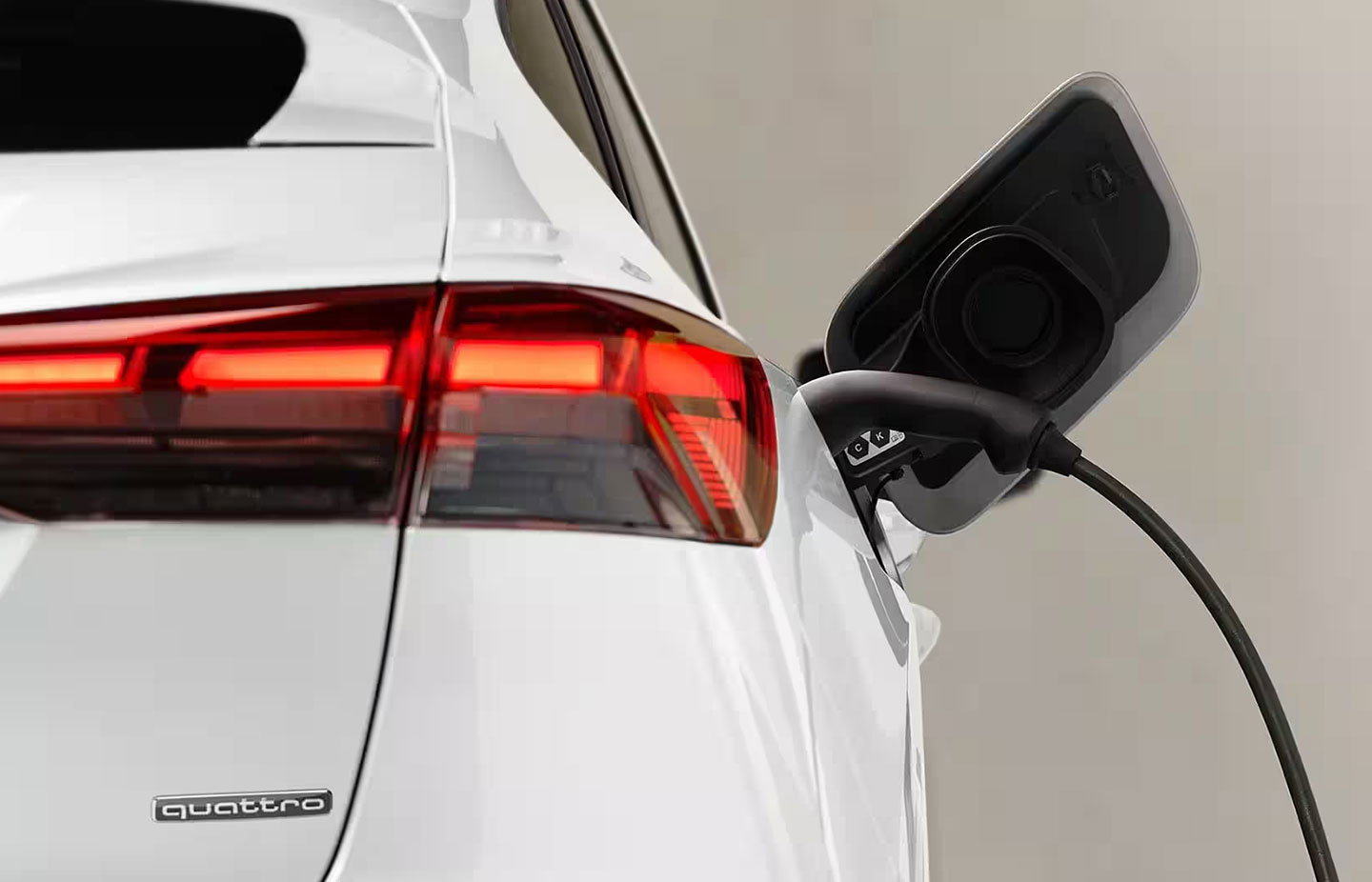BEV Environmental Impact
This is a topic that experts regularly debate; however, from a top level, the best way to understand pollution levels for EVs and internal combustion engine vehicles is to understand various factors over the lifetime of the vehicle. This is called "Well-To-Wheel" emissions.
Firstly, there are two major types of emissions: Greenhouse emissions which are a major contributor to global warming, and Smog emissions, such as NOX, SOX, CO and particulates, which contribute to poor air quality and are known to shorten the lives of millions per year.
Commonly, "Zero Emission" vehicles are declared when the vehicle itself produces no emissions in its use, such as no tailpipe emissions. However, they are not completely emissions-free. Every type of energy production requires some output of carbon dioxide. Renewable energy sources are typically extremely low. Plus, every vehicle creates emissions in its manufacturing process.
Most electricity grids are made up of multiple types of electricity generation. These different types are typically divided into 3 areas: nuclear, renewable, and fossil fuel.


Therefore, total vehicle emissions can be broken down as follows:
Over many years, internal combustion engine vehicles have significantly reduced their smog emissions. However, ICE vehicles are impacted by engine wear, which has a negative impact on emissions performance.

Vehicle production emissions
The other major factor to consider is production emissions from making the vehicle itself. In general, building an electric vehicle is more energy-intensive than a combustion vehicle. For example, Volvo estimates that its Polestar 2 model creates between 10 more tonnes of CO2 emissions to make the vehicle than the similarly-sized Volvo XC40 gasoline model.
Typically, the larger the vehicle and the larger the battery, the more CO2 emissions are produced. Not only that, larger vehicles use more energy and create more emissions in the use phase as well.
Total Lifetime Vehicle Emissions
From here, we can create a table that compares total vehicle

Unit: tonnes of CO2
Assumptions:
Distance travelled: 20,000km per year
Total life: 15 years
Volvo XC40 T5 fuel economy: 9L/100km combined city/highway
Polestar 2 efficiency: 22.8kWh/100km combined city/highway
Electricity: Quebec 29g CO2/kWh, Alberta 475g CO2/kWh
Vehicle production emissions include vehicle disposal emissions at the end of life
In summary, a battery electric vehicle driven in Quebec will result in a reduction in CO2 emissions over a vehicle's lifetime of 72%, while a vehicle driven in Alberta will reduce CO2 emissions by 41%. No matter where you drive, a BEV will reduce smog-forming emissions by 100%, which has the potential to improve air quality in our cities drastically.
Additionally, there are several other issues to address with regard to mining and metals inputs.
Rare Earths
Rare earths are a particular type of mineral that is mostly mined in China. Niobium is often added to electric motors to improve their performance and efficiency. There are no rare earths in batteries or IC vehicles (without electric motors).
Battery Metals
There are two major types of Lithium Ion batteries used in vehicles today: NMC and LFP. NMC batteries have cathodes made of nickel, manganese, and cobalt. While none of these are at all rare, cobalt has potential sourcing issues in the Democratic Republic of the Congo (DRC) which is known for human rights violations. There are other cobalt mines around the world, including Canada, Australia, the Philippines, and Russia.
Today, many vehicle manufacturers are looking to reduce the cobalt content in their batteries to counter perception problems.
On the other hand, LFP batteries use iron-based cathodes, which is extremely common. These batteries do not have the energy density of NMC batteries; however, they offer longer life and are much cheaper to produce.
Lithium itself is also very common, with the majority of mines located in Australia and South America.
Catalytic Converter Metals
To meet smog emission regulations, all new internal combustion engine vehicles are equipped with a catalytic converter. The metals inside the catalytic converter react with the emissions to turn them into less harmful gases. Unfortunately, the metals inside are typically rare and expensive and include platinum, palladium, and rhodium. This makes them easy targets for thieves and replacements can be very expensive.
Mining
Whether mining for minerals or drilling for oil, the impact on the physical environment can be harmful if not carefully controlled. However, these minerals impact the backbone of daily lives and it is essential to continue to recover them if we do not want drastic impacts on our lives.
Battery Recycling
Recycling lithium-ion batteries is making major strides in industry growth and technologies. Recycling batteries offer concentrations of minerals far denser than mining, making it extremely worthwhile. By recycling batteries for their minerals, there is a significant reduction in the CO2 production of batteries, and this credit can be consequently carried forward as more batteries are produced.
In summary, there are major gains to be made in pollution reduction, both for greenhouse gas emissions and smog emissions by moving toward electric vehicles
Sources
Use emissions
Electricity emissions:
Energy production emissions
Smog pollution shortening lives
Smog emissions composition
https://publications.gc.ca/Collection-R/LoPBdP/modules/prb98-4-smog/maincomponents-e.htm#:~:text=Smog%2C%20formed%20mainly%20above%20urban,NOx)%20and%20ammonia%20gas. https://energyeducation.ca/encyclopedia/Smog
Volvo / Polestar vehicle CO2 production emissions
Vehicle efficiency
Smog related emissions for electricity production
Catalytic converter thefts